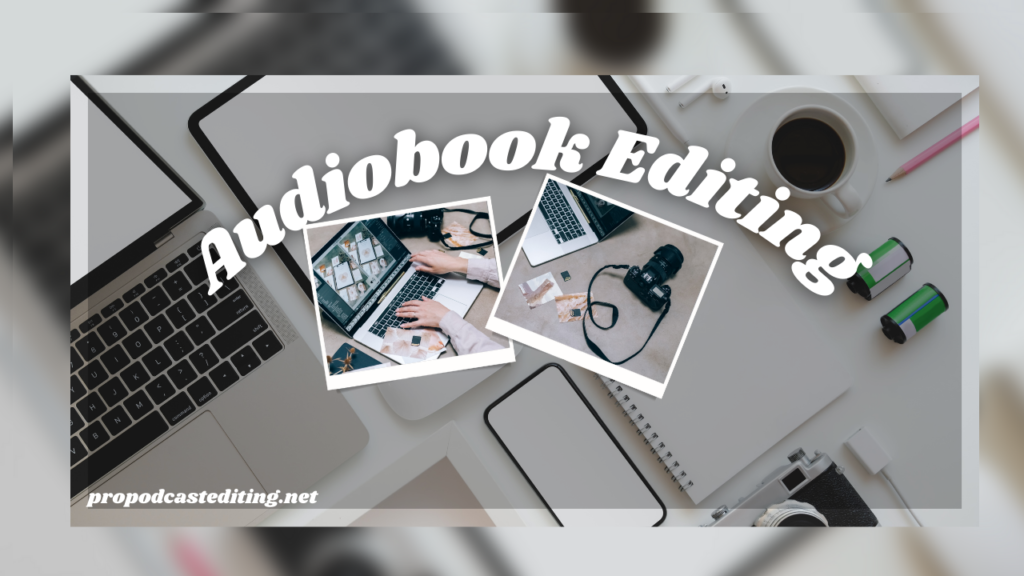Introduction
Audiobooks are one of the most cherished types of narrations where written text is displayed in rich audio response. Nonetheless, here, the magic of an audiobook does not exist merely on the voice of a narrator; it also largely depends on editing. Audiobook editing is the art of making audio aural productions free of mistakes, captivating and easy to listen to a listener. In today’s article we will look at some of the important points regarding audiobook editing and how it is possible to improve the quality and continuity of the resulting product.
Why is Audiobook Editing Necessary
Audible editing takes the recorded sound and pulls out a polished and refined form that is acceptable to the market. Unlike traditional audio editing, audiobook editing involves unique challenges:
Preserving the Narrator’s Flow: The rhythm of speech must be kept intact but its simultaneous with the process of eliminating mistakes, pauses, and other inconsistencies on the way.
Ensuring Accuracy: This way, the audio does not contradict the text in some way that may lead to irritation or general confusion for the listener.
Enhancing Listener Experience: Perhaps, thanks to the filtering of unnecessary sounds, proper rhythms, and adjusting the volume; editors design the show to engage the audience.

Primary Actions in Audiobook Editing Postproduction
1. Preparing the Raw Audio
This means that the first basic step to go through when preparing the audio for analysis is importing of the raw audio data files into the editing software. This stage includes:
Grouping audio files in terms of the chapter or section they are covering.
Present for the case where the original recordings made on voice recorders might be lost.
2. Cleaning Up the Audio Editing
It is important to cut out any noise that is not needed as much as possible but this is usually not possible. Editors use tools to eliminate:
Breath sounds.
Ambient noises (whistling, ticking or crackling).
Inability to correctly say words or phrases or reproduce them again and again.
3. Adjusting Timing and Pacing
To maintain the listener’s engagement, editors must adjust the timing:
Reduction of extended durations of pausing.
Keeping the elements within a natural and appropriate rhythm concerning the kind of the narration and materials presented.
4. Equalizing and Mastering
It is important that the last audio produced, is clear and sound like it was produced by the professionals. Techniques include:
Equalization (EQ): Adjusting the amount of sounds in order to produce higher pitch.
Dynamic Range Compression: Meaningful experiencing and production standards with regard to volume levels for the audiobook.
Mastering: Producing the audio in such a manner that fits the target distributing platform akin to Audible or ACX.
Equipment and Programs for Audiobook Cutting
Anything but high quality requires professional software to edit. Popular tools include:
Audacity: A non –commercial easy –to –use editor that has the capacity of providing powerful enhancements.
Adobe Audition: Professional noise suppression tools, equalizer, and mastering tools.
Pro Tools: Traditional solutions that are good enough for large-scale application development.
Many editors also use plugins; for example, iZotope RX for accurate noise removal and repair work.
Comparison of typical issues faced in audiobook editing
Editing audiobooks is not without its challenges:
Voice Consistency: Stemming the recordings made on different days in terms of tone and volume levels.
Tight Deadlines: The clash between quality and the need for fast deliveries.
Meeting Platform Standards: The target market requirement of specific audiobooks such as Audible formatting or Spotify placement.
Recommendations to a podcaster or upcoming audiobook editing
Invest in Quality Headphones: It is always important to monitor the various sounds in any given environment to identify any small problems which might be arising.
Master Shortcuts: You can type learning the shortcuts on the particular type of editing software you use to make the process faster.
Practice Patience: Audible editing needs to be carried out comprehensively and as such should not be hurried.
Stay Updated: This topic changes quickly so staying up to date on upcoming trends and changes on the audiobook industry is ideal.
Conclusion
Audiobook editing being a techical process is a call and organic process at the same time. Due to the emphasis that they give to clarity, consistency, quality, editors perform a crucial task of providing interesting listens. Whether you’re just starting as an editor or an author who wants to create an audiobook, it is critical to take time and grasp the working of audiobook editing. As we have seen in this book with the use of appropriate tools, techniques and effort, everyone can produce audiobooks that capture the hearts of people around the globe.

Leave a Reply